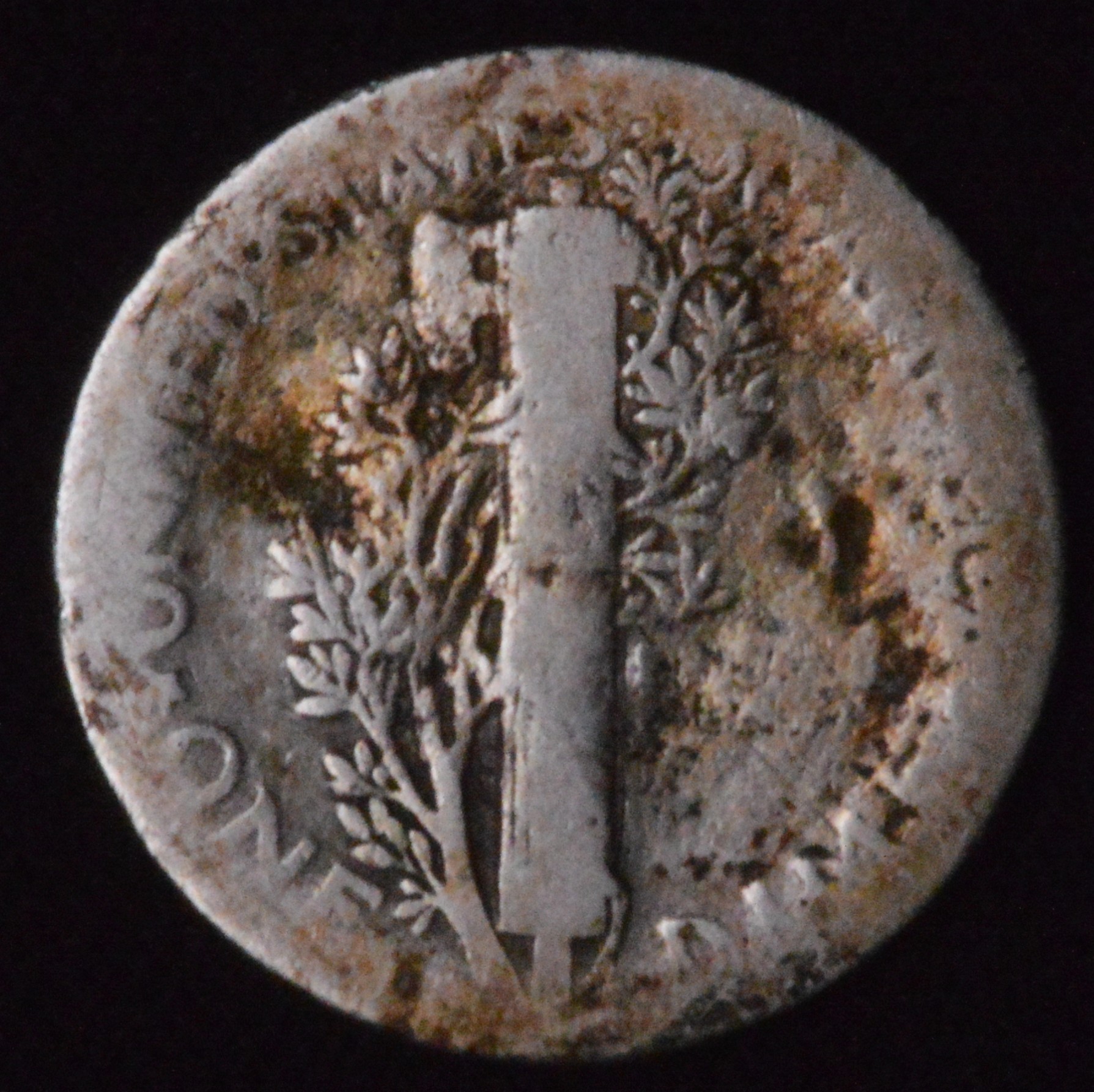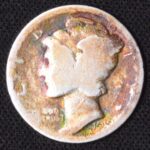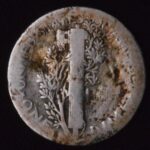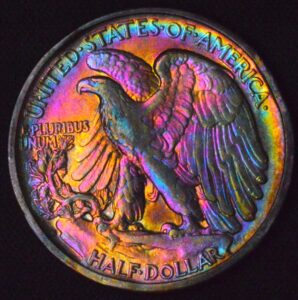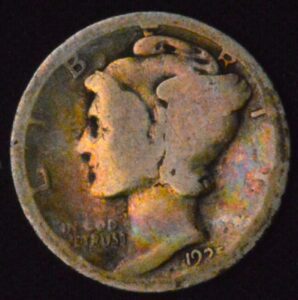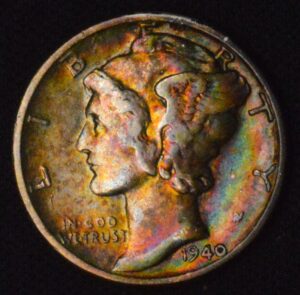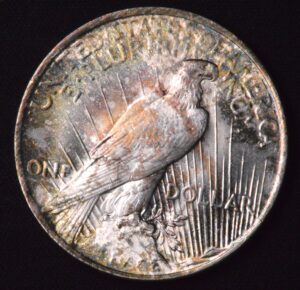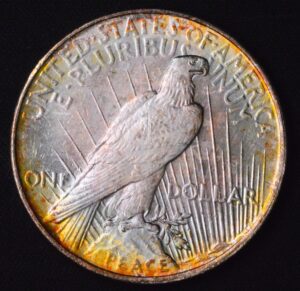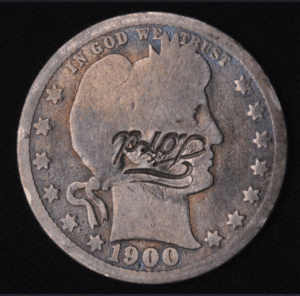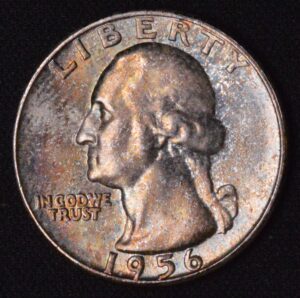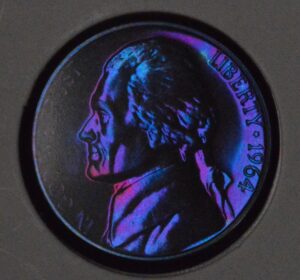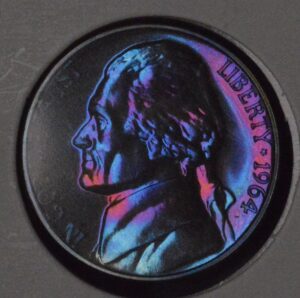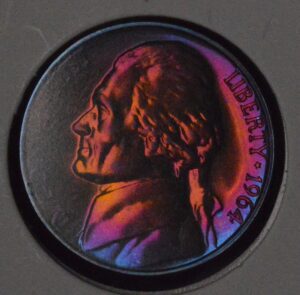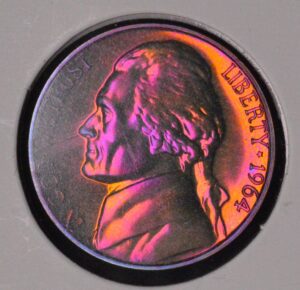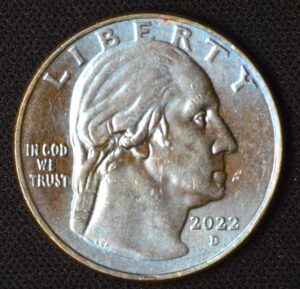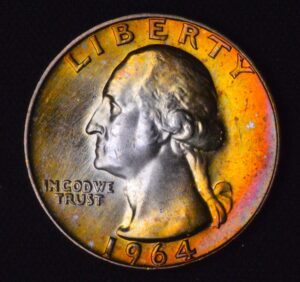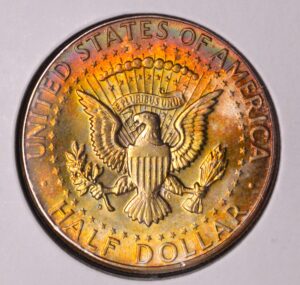Description
A rainbow toned Mercury silver circulated dime is a standout piece for collectors due to its vivid, multicolored toning that results from natural oxidation of the silver surface over decades in specific storage conditions, such as old coin albums or paper bank cards. These vibrant hues—blues, reds, yellows, and greens—can enhance the eye appeal and market desirability of a normally circulated coin, making it a prized find in the world of American numismatics.
Mercury dimes, officially called Winged Liberty Head dimes, were struck from 1916 to 1945 and are composed of 90% silver and 10% copper. The obverse features the head of Liberty in a winged cap, symbolizing freedom of thought, while the reverse displays a fasces and olive branch for unity and peace. Rainbow toning, while unrelated to the coin’s grade or mint, can dramatically increase collector interest and sometimes market price.
The desirability and premium of rainbow toned Mercury dimes depend on the vibrancy and pattern of the colors, the underlying coin grade, and the originality of the toning. Collectors often pay significantly more for visually striking examples, and these can provoke emotional responses, especially when the toning is natural and the coin is from a notable date or mint, such as the renowned 1939-D releases.
For the circulated examples, the underlying wear means these coins are not mint state but are appreciated for their extra character. Natural rainbow toning, commonly found on Mercury dimes stored for many years under optimal conditions, offers collectors a chance to acquire an affordable yet visually unique piece of American coinage history.
A rainbow toned Mercury silver circulated dime is a standout piece for collectors due to its vivid, multicolored toning that results from natural oxidation of the silver surface over decades in specific storage conditions, such as old coin albums or paper bank cards. These vibrant hues—blues, reds, yellows, and greens—can enhance the eye appeal and market desirability of a normally circulated coin, making it a prized find in the world of American numismatics.
Mercury dimes, officially called Winged Liberty Head dimes, were struck from 1916 to 1945 and are composed of 90% silver and 10% copper. The obverse features the head of Liberty in a winged cap, symbolizing freedom of thought, while the reverse displays a fasces and olive branch for unity and peace. Rainbow toning, while unrelated to the coin’s grade or mint, can dramatically increase collector interest and sometimes market price.
The desirability and premium of rainbow toned Mercury dimes depend on the vibrancy and pattern of the colors, the underlying coin grade, and the originality of the toning. Collectors often pay significantly more for visually striking examples, and these can provoke emotional responses, especially when the toning is natural and the coin is from a notable date or mint, such as the renowned 1939-D releases.
For the circulated examples, the underlying wear means these coins are not mint state but are appreciated for their extra character. Natural rainbow toning, commonly found on Mercury dimes stored for many years under optimal conditions, offers collectors a chance to acquire an affordable yet visually unique piece of American coinage history.
CUSTOMER FEEDBACK








Related Products & Newly Released!




SHIPPING POLICY
Your order is shipped from the United States with USPS tracking within one business day.
14 Day Return Policy
You can return your item back within
14 days of the purchase

Secure payments
Your payments are 100% secure and are processed through Square or PayPal on a protected security network.
SHIPPING POLICY
FREE International and Domestic (United States) shipping. Your order is shipped with USPS tracking 24 hours after you order.
14 Day Return Policy
You can return your item back within
14 days of the purchase

Secure payments
Your payments are 100% secure and are processed through Square or PayPal on a protected security network.
RESOURCES
support
Get Real Deals!
Sign up now to receive our articles for the latest insights and promotions!
RESOURCES
support
Get Fresh Articles!
Signup our newsletter to get update insight or promotions.



